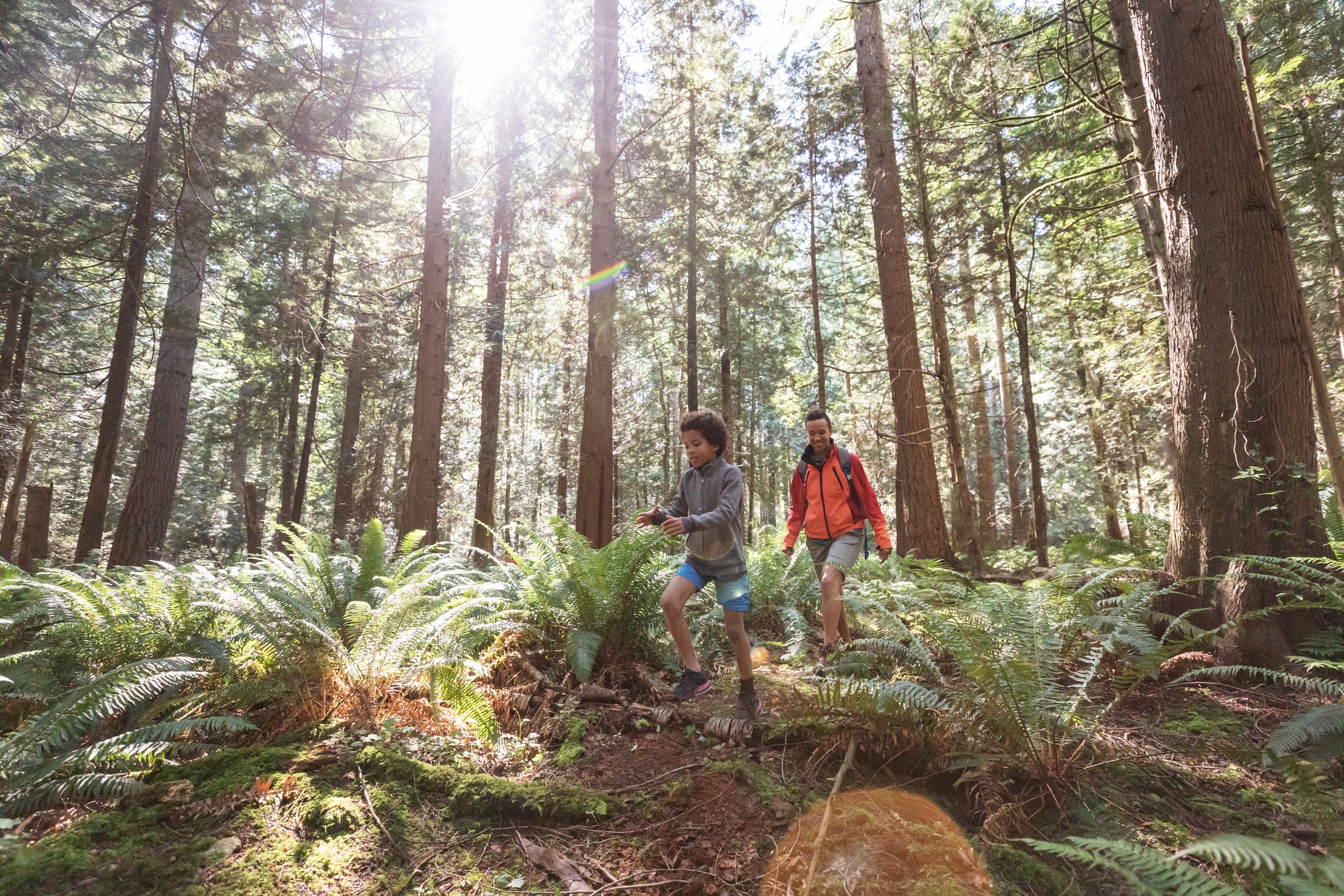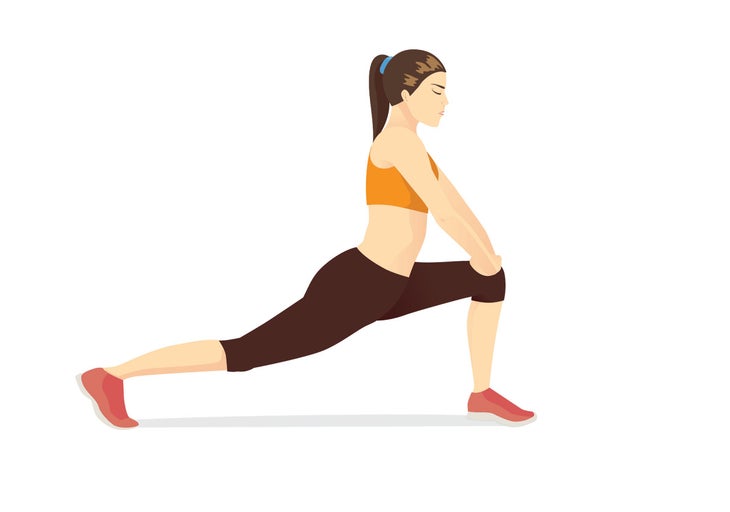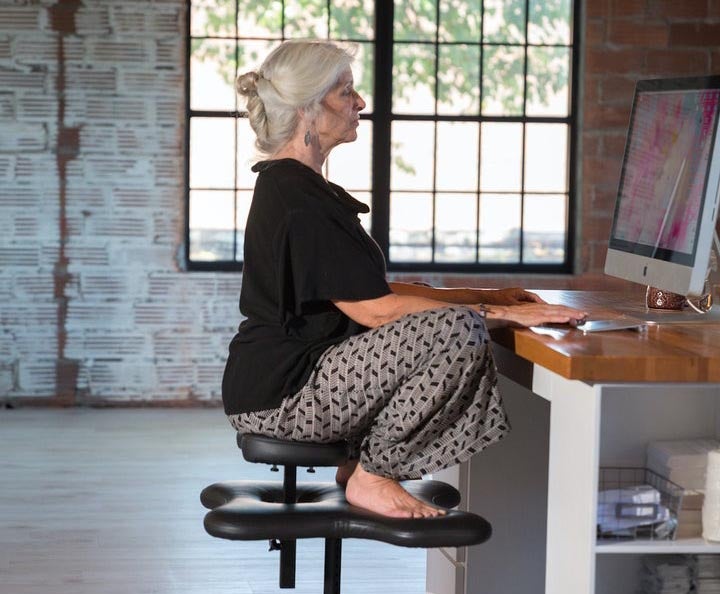Recover Better With Active Rest

Mom and son walking in the woods in the sunshine
The average person sits for nine hours a day or more, and the pandemic has only increased that time. Even if you’re an active runner, you might still be bound to your office chair for 40 hours a week. More than a dozen well-designed studies have found that sitting too much increases the risk for heart disease and other chronic conditions and is likely to impair your health and speed up death. Researchers from Harvard and leading European universities tracked more than 44,000 men and women for up to 14 years and found that those with the least amount of physical activity were four times as likely to die of any cause as those with moderate or high levels of movement.
Most of the conversation around sitting has made it seem as though this is an evolutionary problem—that we’re the first society to deal with such a problem. But it turns out that researchers now believe our hunter-gatherer ancestors were probably just as sedentary as we are today.
So why didn’t they have all the health issues (like cardiovascular disease) that come with prolonged sitting? The simple answer: They didn’t really sit.
How We Used to Sit
In addition to studying long-term biological history, Daniel Lieberman, PhD, Harvard professor of evolutionary biology and author of Exercised: Why Something We Never Evolved to Do Is Healthy and Rewarding, spent time observing people in Pemja, a remote area of Kenya where the locals still live much like our hunter-gatherer ancestors, untouched by modern conveniences. And he found that sitting there is viewed, and practiced, quite differently than in our technologically driven culture.
Like our ancestors, the residents of Pemja are forced to do a lot of physical labor just to survive. And they walk a lot—about 5 miles each day, which equates to around 10,000 steps. So sitting, for them, is a respite from the day’s physical activities.
Surprisingly, Lieberman found that the residents of Pemja spend about 10 hours sitting every day, but they don’t do it on chairs or sofas. Without that cushy support, they use many muscles to support their bodies in a sitting position, and they often get up and move around—there are no screens to occupy their attention. Bottom line, they don’t sit motionless for long periods of time without using their muscles.
RELATED: Meditation For Runners Who Hate Sitting Still
And in a study published in the Proceedings of the National Academy of Sciences, biologists looked to a modern group of hunter-gatherers in Tanzania, the Hadza tribe, to understand how sedentary health risks may have evolved. Even in living an extremely active lifestyle, the Hadza people had the same amount of inactivity as people in industrialized communities, but without the chronic diseases.
“Even though there were long periods of inactivity, one of the key differences we noticed is that the Hadza are often resting in postures that require their muscles to maintain light levels of activity—either in a squat or kneeling,” David Raichlen, professor of biological sciences at the University of Southern California, said in a press release.
This is what they call active rest. While they are technically resting and burning less energy, their leg muscles are still active.
For runners, active rest could be exactly the trick to combatting the fatigue that office work puts on the body. Since sitting causes tight hips and hamstrings as well as disengagement from the core, it’s harder to stabilize the spine and engage hip muscles to keep a proper running posture.
“There have been studies suggesting that people who exercise are sedentary about as much as everyone else, so [runners] would likely benefit from finding ways to reduce chair-sitting when possible,” said Raichlen in an email to Women’s Running.
RELATED: Hamstrings Hurt? Fix Your Hips
Easy Ways to Add Active Rest to Your Day
It might feel a little awkward to squat all day long, but we’ve rounded up some tips to help you master the art of active rest.
Do This Hip Flexor Desk Stretch

This stretch can get you out of your chair while keeping you productive. Kneel down into a lunge position. While holding the pose, you’ll want to straighten and lift your torso while rotating your pelvis backward. Depending on your height and the height of the desk, you should be able to reach your keyboard just fine. Start out with five minutes per side a few times a day. Aim to hold the position a little longer if you can to really extend your kneeling time while getting the full benefit of a hip stretch.
Revamp Your Desk
Thinking of ways you can bring your desk set up closer to the floor (or bring the squatting position closer to your desk) will help this feel more comfortable. Utilizing a coffee table as a way to kneel is one option. A yoga block under your butt and a blanket under your knees can be used if you need a little support from time to time.
RELATED:Tight Hips? Try This 15-Minute Stretching Routine
Or there are small portable desks, like the Elizabeth Flow Desk that can easily be used on the floor or moved to a traditional desktop as a standing desk when your knees need a bit of a break. Amazon has several budget friendly options for these tray table style desks.

If you’re not working from a laptop and bound to the desk you have, a new chair could be the solution. The Soul Seat, from the same company that makes the Flow Desk, is a splotchy shaped bi-level seat that makes it possible to squat or kneel while utilizing your traditional desk set up. At $875 minimum for their chairs, this option is not for everyone. However, some companies do have budgets for ergonomic workstations, so it’s worth asking your employer.
Stand If You Can
If squatting is still not a viable form of active rest for you, Raichlen notes that simply breaking up prolonged periods of sitting will be beneficial. Utilizing the uber-popular standing desk, setting a timer on your phone or watch to remember to stand and stretch periodically, and taking walking meetings are all ways you can sit less.
One study, for the American Council on Exercise, was designed to determine how much activity it takes, and how often you need a break from sitting, to produce health benefits. The results: It doesn’t take much if you stand up and move often enough.
The study group of 13 middle-aged men and women who typically spent six hours per day on their butts didn’t engage in structured exercise. Rather, their sitting breaks consisted of short walks or household chores such as washing dishes, folding laundry, or even talking on the phone while standing or walking.
After eight weeks of taking these types of breaks from sitting, for five minutes every hour, participants experienced the following health benefits:
- HDL (“good”) cholesterol increased by 21 percent
- Triglycerides dropped by 24 percent
- Blood glucose dropped by 8 percent
Taking a 10-minute break every two hours produced almost as much benefit.